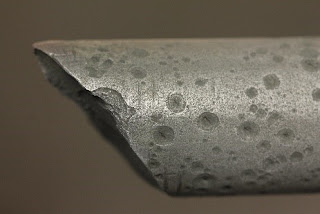Facts About Pump Jacks and Reciprocating Pumps
Pump
jack and reciprocating pumps are devices used in the oil and
construction industries. Both pumps are effective for pumping oil and other
liquids, but they operate and perform differently. The major difference is that
pump jacks are used in applications where there isn’t enough high pressure and
reciprocating pumps are used in low flow, high pressure applications. Below are
the specifics of both, which further show the difference between the two.
The Pump Jack
Commonly
used in the petroleum industry, pump jacks extrude oil from wells where there
isn’t enough pressure to force oil to the surface. They do this by creating an
artificial lift. This increases the pressure within the oil well, thus pulling
the oil up to the surface. Artificial lifts from a pump jack can be used on
their own or to increase production when other pumps experience drops in
pressure. The oil pump jack is the most common type of this
lift system with equipment placed below and above ground to push the crude oil
to the surface.
They’re
composed of a long beam connected to an external power source. The power source
allows the beam to move up and down. A series of sucker rods at the end of the
beam dip in and out of the well during the pump action. These rods are connected
to a sucker rod pump installed in the well. The pump works like a piston –
increasing pressure inside the well and lifting the oil to the surface. The end
of the pump that’s above ground is connected to a pulley system that causes the
jack to move continuously.
The Reciprocating Pump
Reciprocating
pumps are positive displacement pumps that utilize a piston or plunger to
increase pressure and the volume of a cavity. The pump operates by using the
reciprocating motion of the pistons. Pumps can be designed with single, dual or
multiple pistons or plungers. They’re designed to be used in high pressure, low
flow situations. For example, when there’s high pressure in a well but still
only a few gallons of oil passes through the pump each minute. Reciprocating
pumps are often used in situations like this because they are some of the
oldest, most effective pumps.
They
also have a large range of power options – from 1hpto 3,000 hp. In fact,
reciprocating pumps are so effective, durable and strong that they’re used in
the most corrosive and abrasive applications. Even in the most corrosive
environments, reciprocating pumps can operate at as high as 90% capacity at any
set point. The pumps come in a variety of shapes, sizes and styles. Different
pumps are used for different applications, and the pump used depends on the
required flow rate, the rate of pressure, pipe material, corrosivity, fluid viscosity,
measurement and control systems and pipe material. Keep in mind using the wrong
pump can be dangerous and result in damage to piping, equipment and systems.

Comments
Post a Comment